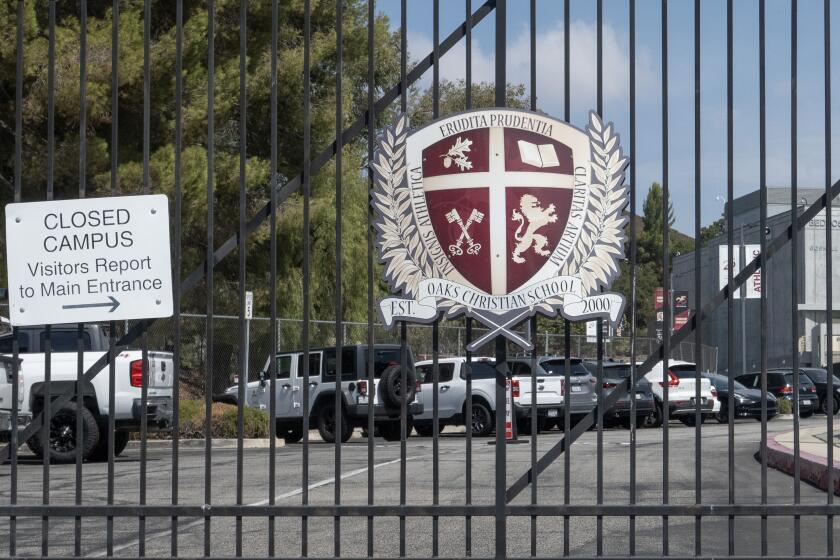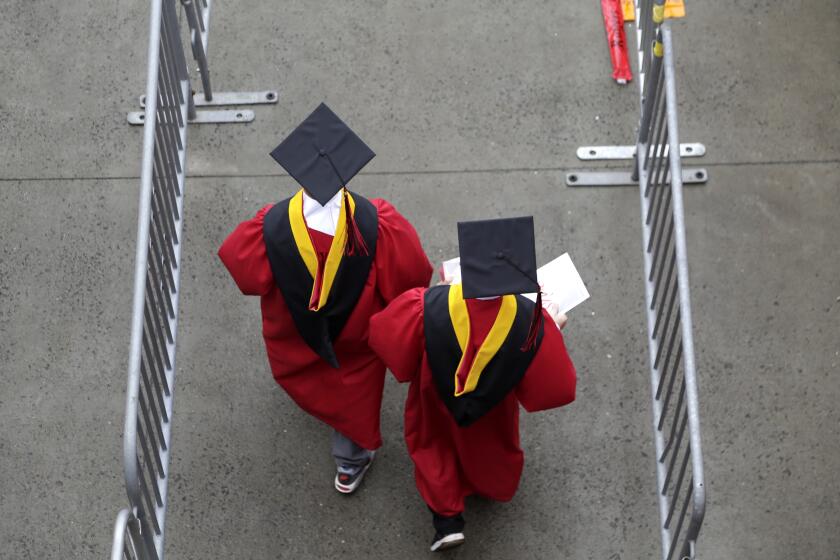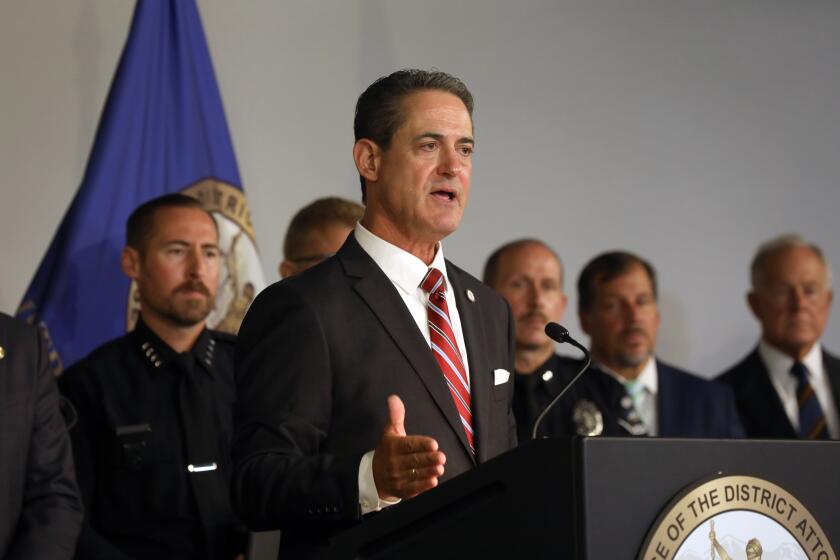Nonwhite School Districts Would Double Under Plan
At least two of five new San Diego city school board districts would have a majority of residents who are nonwhite--twice as many as now--under the most likely scenario for reapportionment being considered by trustees.
And, if city voters in November approve an amendment to increase the number of districts from five to seven, two of the new, smaller areas would also have nonwhite majorities, board members agreed Thursday in moving toward final decisions next week.
The board asked its demographers to fine-tune maps for both the five- and seven-district scenarios but otherwise indicated it was satisfied with the general approach to the often-controversial issue of decennial reapportionment based on federal census data.
The school system must create districts with as equal numbers as possible of total residents as well as equal numbers of voting-age residents; no more than a 10% deviation is permitted.
It must also try as much as possible to enhance the voting power of ethnic groups such as African-Americans, Latinos and Asians by attempting to create as many rational districts as possible where they can be in the majority.
Under the expected five-district reapportionment, the current District D, which covers most of the Mid-City area, would be expanded into the downtown and Golden Hill areas to pick up additional Latino residents and create a nonwhite majority. Latinos would compose about 39% of the district, blacks 13%, Asians 5.5% and whites about 42%. District D now has a 61.7% white majority.
District E, the only one now with a nonwhite majority, would remain that way, with Latinos at about 26%, blacks about 27%, Asians 21% and whites about 26%. It is the only district that has ever had nonwhite representation; the past three trustees have been African-American. The area would continue to cover Southeast San Diego, Valencia Park, Encanto and Paradise Hills.
Districts A, B and C would remain with a white majority, ranging from 76% to almost 83% white depending on the final configurations of how to split the neighborhoods of Point Loma, Mira Mesa, Tierrasanta, San Carlos and La Jolla-University City among the three districts.
Final action on the five-district plan was delayed Thursday as trustees wrestled with a section of the Kensington neighborhood east of Normal Heights, where incoming District D board member Ron Ottinger lives.
The current board wants to keep Ottinger’s residence in a new District D, even though the plan that best meets reapportionment criteria would place it in District A. Ottinger is running unopposed this fall within the existing District D boundaries.
Although that would involve the movements of a few lines here and there, the fine-tuning exasperated trustee Shirley Weber, who at one point said, “I don’t know if we can protect all of us. . . . We need to draw lines with integrity . . . not carve around someone’s house here and there.”
But her colleagues expressed confidence that the rejiggering of boundaries could be done without damage either to mandated criteria or their desires to keep individual school communities together.
The seven-district plan most likely to succeed next week carves five districts out of the three districts now covering the La Jolla-University City-Kearny Mesa, Mid-City-downtown and Southeast San Diego-Paradise Hills areas.
One district for the downtown-Golden Hill-City Heights neighborhoods would be more than 50% Latino, while the smaller district for Southeast and Paradise Hills would be about equally split between whites, blacks, Asians and Latinos.
Trustees asked for a few changes that would ensure that all current board members live in separate districts so that they would not have to run against each other in 1994, when the first elections under reapportioned districts would be held.
The public will vote in November not only on the move to a seven-district system but also on a proposal to elect trustees by district only.
Candidates now run in a primary within one of the five districts, with the two top vote-getters proceeding to a citywide runoff. The proposed change would be similar to that made by voters for the City Council in 1988.
More to Read
Sign up for Essential California
The most important California stories and recommendations in your inbox every morning.
You may occasionally receive promotional content from the Los Angeles Times.










